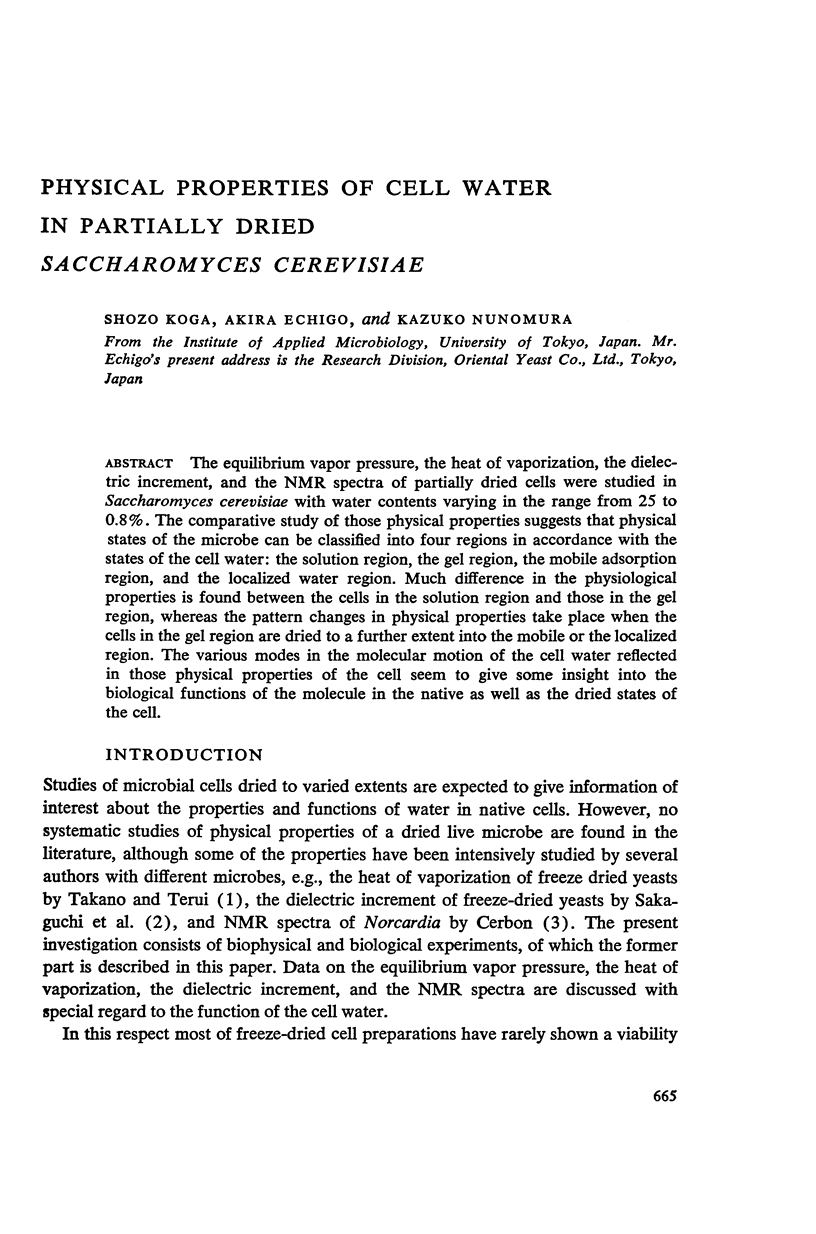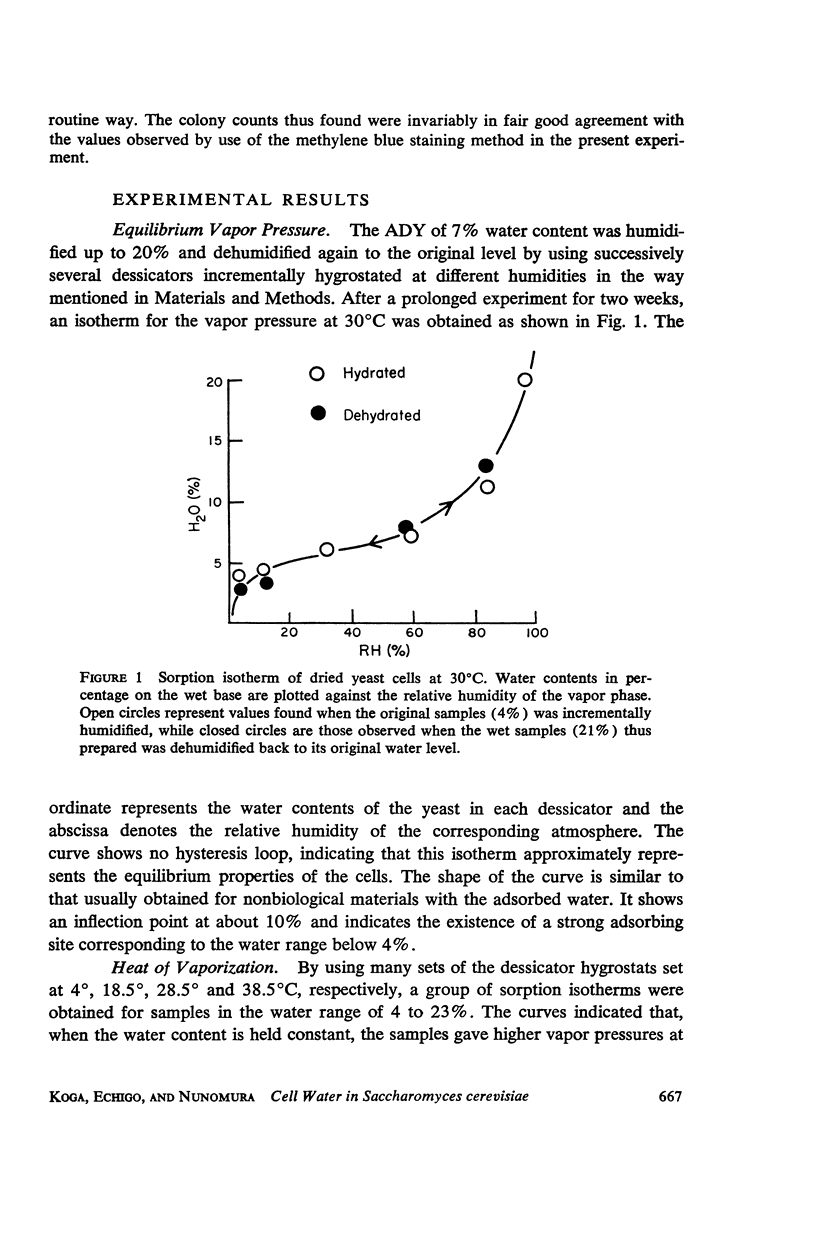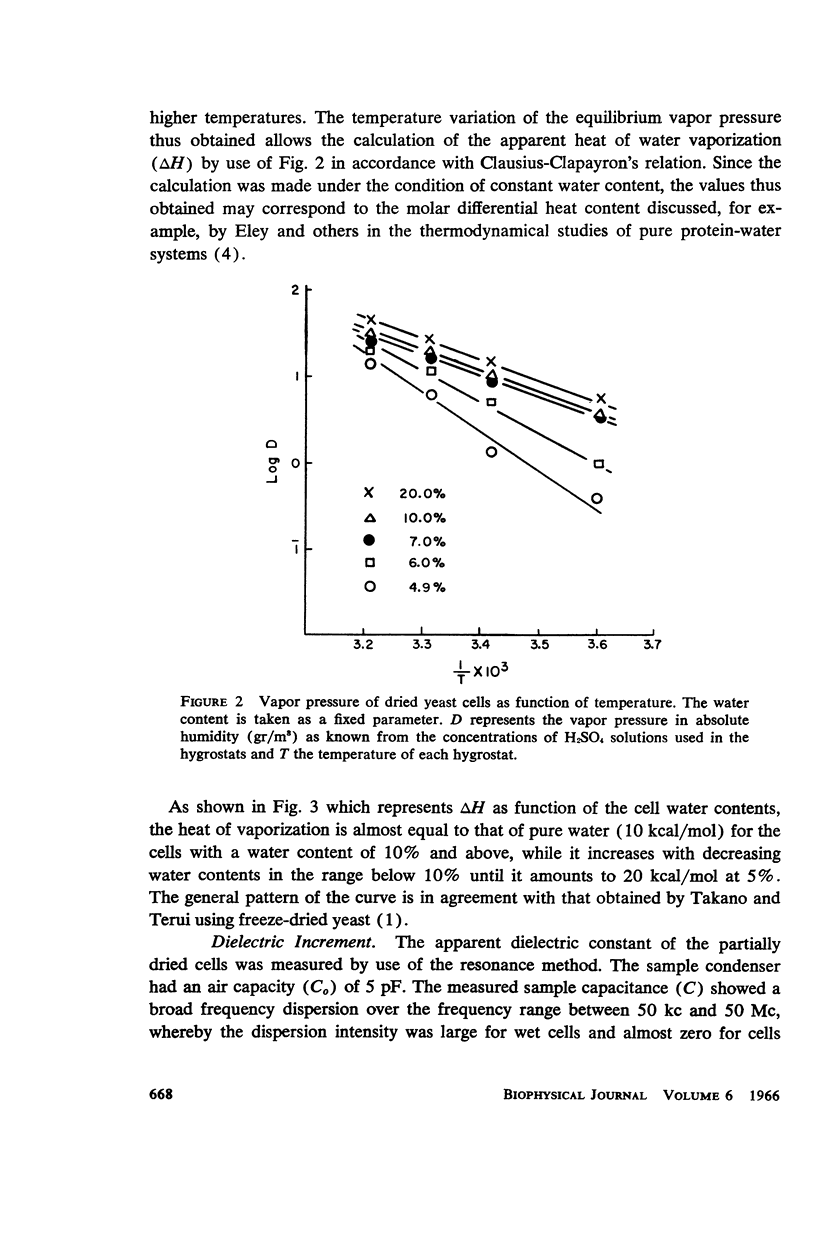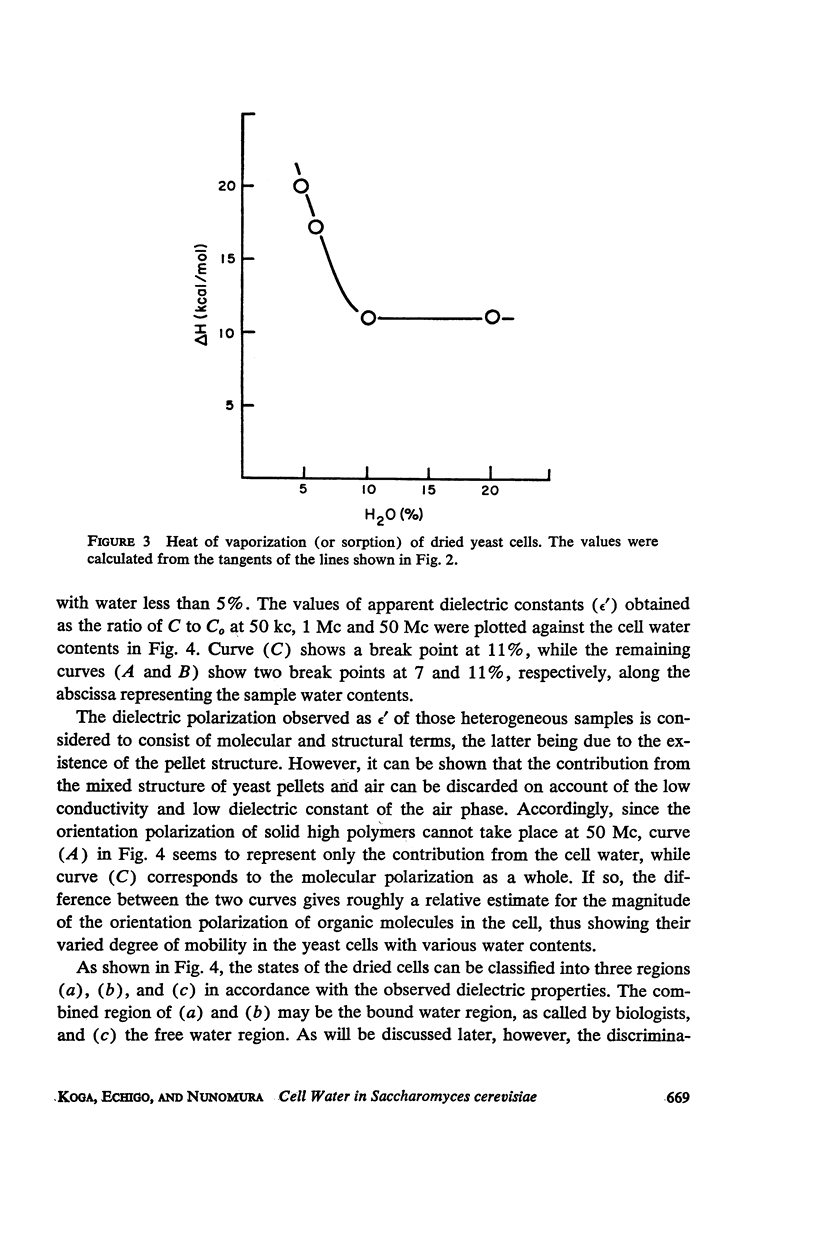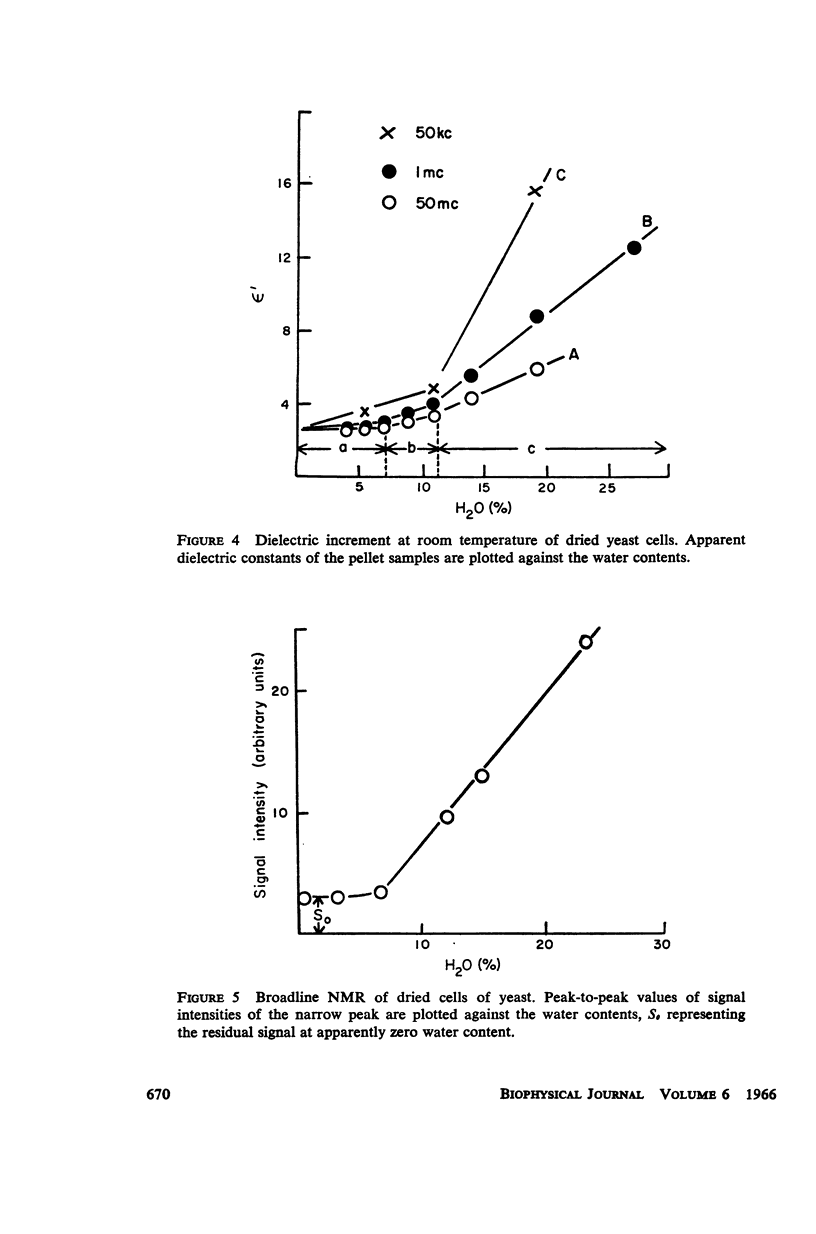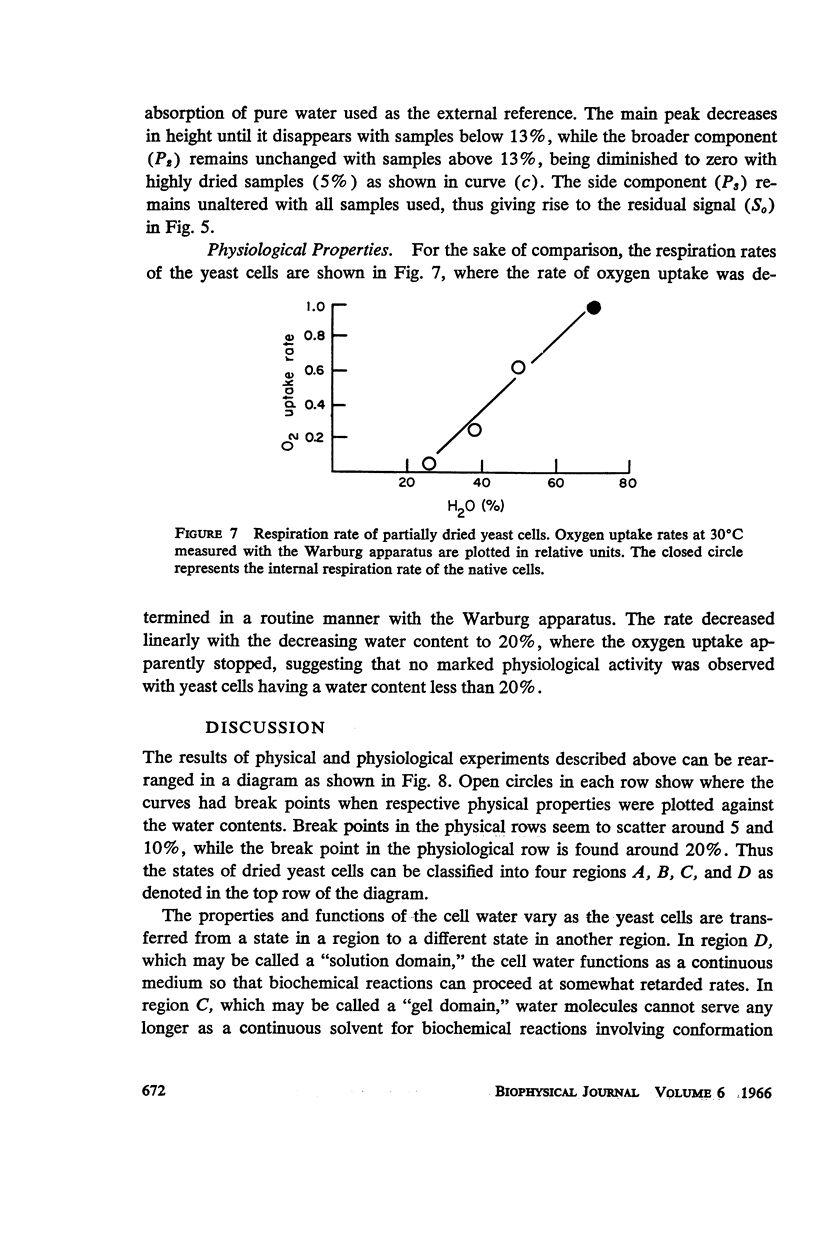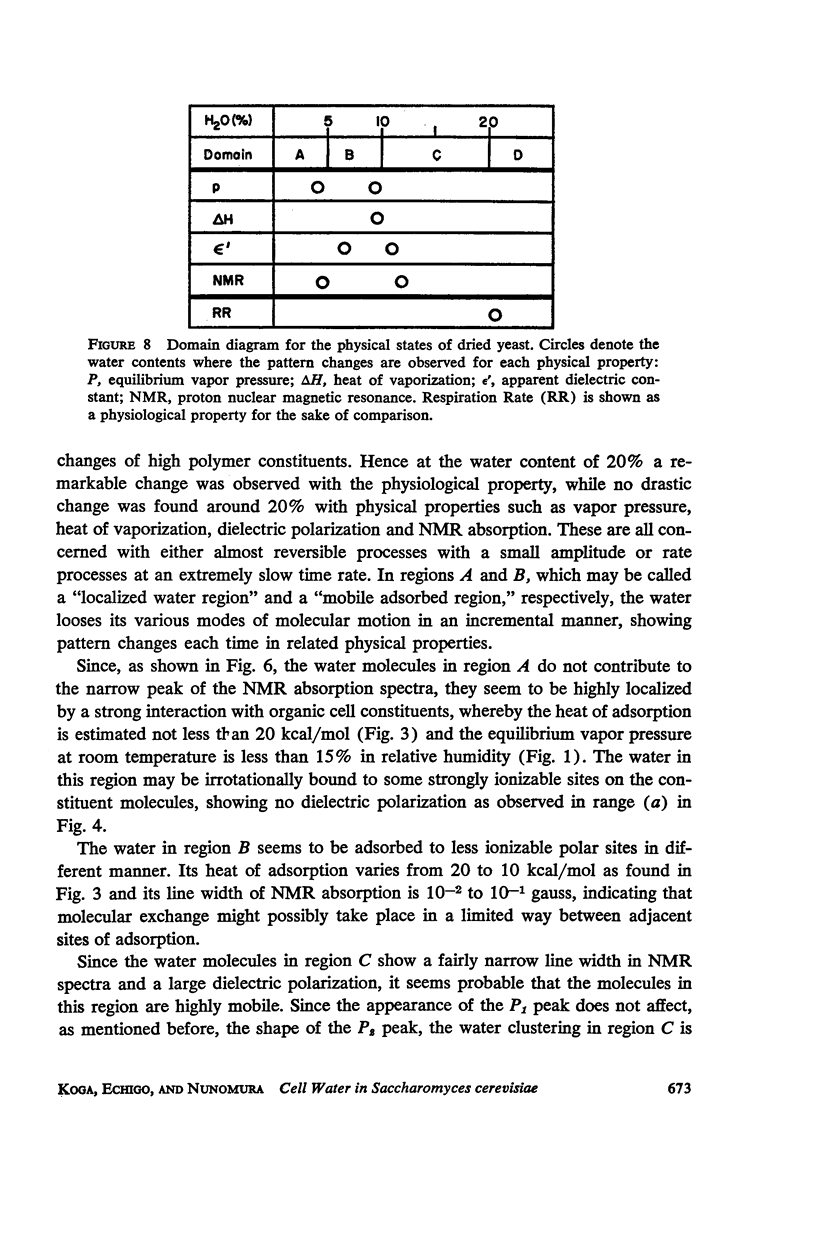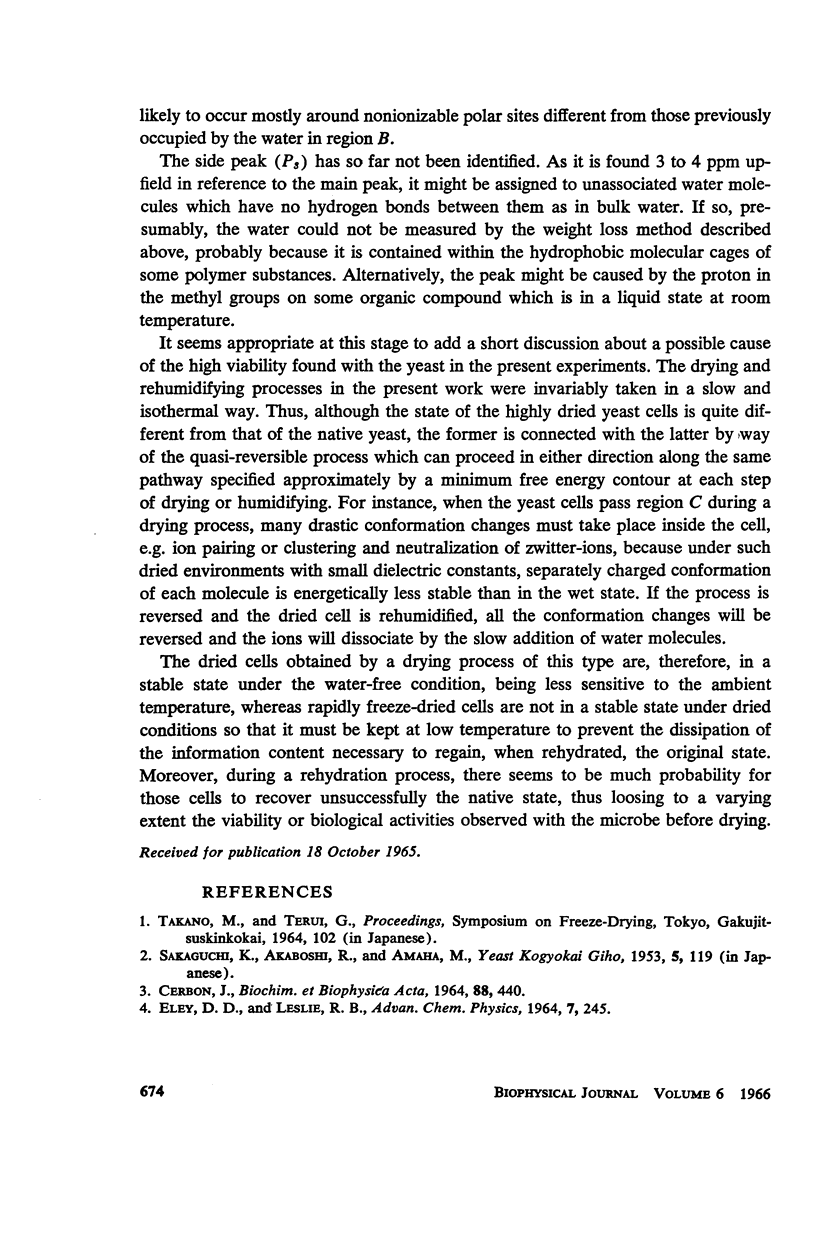Abstract
The equilibrium vapor pressure, the heat of vaporization, the dielectric increment, and the NMR spectra of partially dried cells were studied in Saccharomyces cerevisiae with water contents varying in the range from 25 to 0.8%. The comparative study of those physical properties suggests that physical states of the microbe can be classified into four regions in accordance with the states of the cell water: the solution region, the gel region, the mobile adsorption region, and the localized water region. Much difference in the physiological properties is found between the cells in the solution region and those in the gel region, whereas the pattern changes in physical properties take place when the cells in the gel region are dried to a further extent into the mobile or the localized region. The various modes in the molecular motion of the cell water reflected in those physical properties of the cell seem to give some insight into the biological functions of the molecule in the native as well as the dried states of the cell.
Full text
PDF